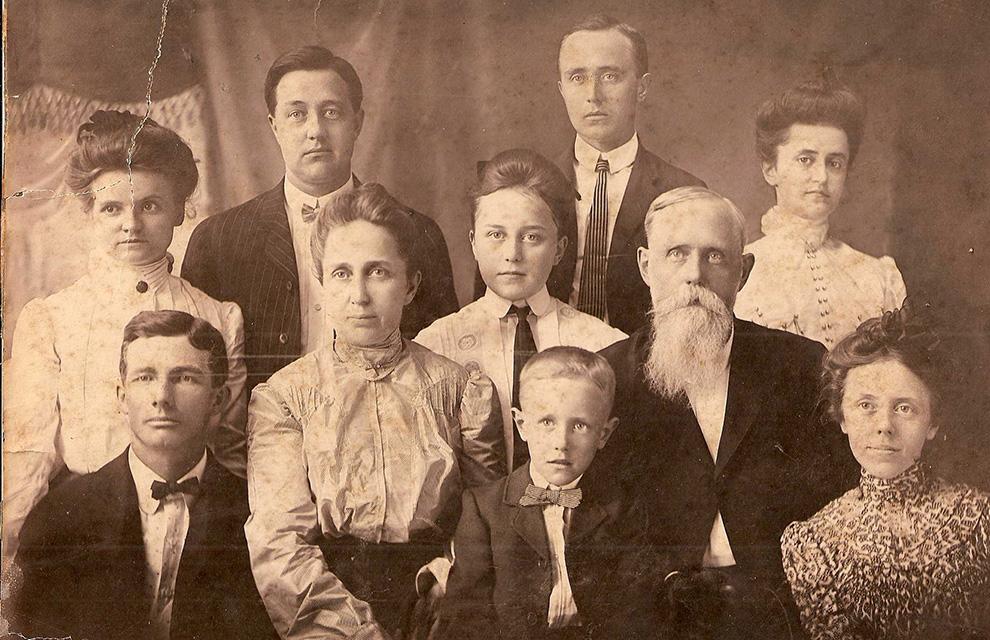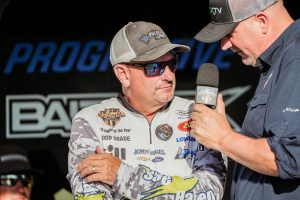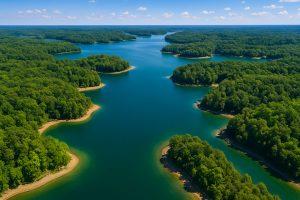Story by Ken Duke
Until recently, if you looked up the Idaho record for largemouth bass on the Gem State’s Department of Fish & Game website, you’d see that it weighed 10.94 pounds, was caught by Mrs. M.W. Taylor, and came from Anderson Lake. Nothing more. No date. not even the name of the fortunate angler—just the name of her husband.
A year ago, if you were to look up all the state records for largemouth bass, and there are 49 of them—that’s every state except Alaska—Idaho had, by far, the least amount of information on the fish. The state listed no date of the catch, no length or girth measurements, no tackle information, and they provided no photo.
It was just the sort of black hole that I like to jump into.
Naturally, I started with the information that I did have. I learned that the Anderson Lake that produced the state record (there are several Anderson Lakes in Idaho) is near the town of Harrison in Kootenai County, just off the Coeur d’Alene River. It covers 720 surface acres, is the first in a chain of lakes, and is managed as a trophy fishery.
I was off and running.
The angler who caught the record largemouth was identified only as “Mrs. M.W. Taylor.” That wasn’t that unusual for the era. Before the second half of the 20th century, women were often identified by their husband’s names. I just wished it wasn’t as common as “Taylor.”
But it was a starting point, and a productive one. I found a 1949 story in The Spokane Review (Spokane, Washington) about a 9-pound, 14-ounce largemouth bass from Idaho. The author thought it was the biggest in the previous decade from the “Inland Empire,” which I learned is eastern Washington and northern Idaho).
Turns out the author was wrong. A bigger bass had been caught, and he was corrected by Mrs. M.W. Taylor herself. Here’s how he reported it:
“Mrs. M.W. Taylor, E4038 Fourth Avenue, reports she landed a large mouth last October in Anderson Lake, Idaho, that scaled 10 pounds, 15 ounces. Anderson Lake is near Harrison, and “the bass there will either take a water dog or plug any time,” Mrs. Taylor says.
Now I knew the month and year—October 1948—as well as an address, which is often very helpful, especially when you’re dealing with a common surname.
Being able to narrow my search to Washington State residents helped enormously. It didn’t take long to find that M.W. Taylor was a successful Spokane dentist who loved fishing and hunting. Bingo!
Dr. Maurice Winfred Taylor (1881-1971) was born in Missouri, and once I found him, it was easy to find our angler—the Mrs. M.W. Taylor who was nearly lost to history.
Her full name was Mary Alice Hurt Taylor, and she was born in 1885 in Keytesville, Missouri, the fifth of eight children. She married Dr. Taylor in 1901, when he was 19 years old, and she was just 16. They had a daughter eight years later.
The Taylors moved to Washington sometime between 1920 and 1922. Once they got there, they started to show up in the newspapers fairly often. Mary Alice was mostly in the society pages, but Dr. Taylor was a lightning rod of drama, much of it surrounding his interest in the outdoors.
The doctor was cited or arrested for illegal possession of game birds, exceeding the hunting bag limit, violating an anti-noise statute (his geese and dogs were disturbing the neighborhood), hunting without a license, hunting ducks out of season, trespassing on a migratory bird reserve, and more.
Most of the charges were dismissed—clearly the product of a constabulary with a grudge—but plenty stuck. The doctor paid a small fortune in fines over the years.
Mary Alice was something of a socialite. The Washington papers ran many reports of her poetry readings, committee appointments, dining engagements, and her stellar performance on the “rigorous birthday card committee.”
The Taylors seemed to have lived good and largely uneventful lives until July 24, 1928. That’s when Mrs. Taylor’s brother—Claude Hurt, a bank president in Mobile, Alabama—was killed in an attempted bank robbery. The man who pulled the trigger was executed, and the man who served as the lookout (James R. Collins) was given a life sentence.
Eight years later, Collins—the bank robbery lookout—escaped from prison in Alabama and went to Philadelphia, where he began a new life, got married, had a couple of children, started a well-digging business, made friends, was active in a church, and generally was on the straight and narrow for 11 years before he was recaptured in 1947. Many people from his new life came to his defense, including Mrs. Taylor and her two living sisters. They asked that Collins be released to go back to his wife and children rather than serve the rest of his life sentence.
Here’s a quote from Mrs. Taylor that was published in several newspapers around the country on October 31, 1947:
“If the man is trying to live a good life and do right, I would be glad to have him set free. I suppose the people who live near him would know more about it, but since he has a wife and family, I think it would be alright to set him free.”
Nine days earlier, Mrs. Taylor caught the Idaho state record largemouth bass. Collins was released the next month.
Dr. Taylor died in 1971 at the age of 89. Mary Alice Hurt Taylor—the Idaho largemouth bass record holder for 76 years now—died in 1974, one day after her 89th birthday. She is interred in Riverside Mausoleum in Riverside Memorial Park, Spokane, Washington.
But there’s more, and it speaks to the provenance of Mrs. Taylor’s skills as an angler…and to the productivity of Anderson Lake in the 1940s.
In 1944, Mrs. Taylor finished sixth in the annual Field & Stream Fishing Contest with a 9-pound, 11-ounce largemouth from Anderson Lake. She caught that lunker on a Granger rod, a Shakespeare reel, Gladding fishing line, and a Heddon River Runt.
She also entered her record bass in the Field & Stream contest in 1948 and finished second for Largemouth Black Bass in the Northern Division. It was taken on October 22, 1948 from Anderson Lake using a South Bend rod, a Shakespeare reel, Ashaway line, and a Pflueger Pal-O-Mine lure.
There’s a pretty good argument that Mary Alice Hurt Turner is the greatest big bass angler in the history of Idaho. The photo that supports this story is the only one I could find of her. Unfortunately, I have no idea which of the women she is.





